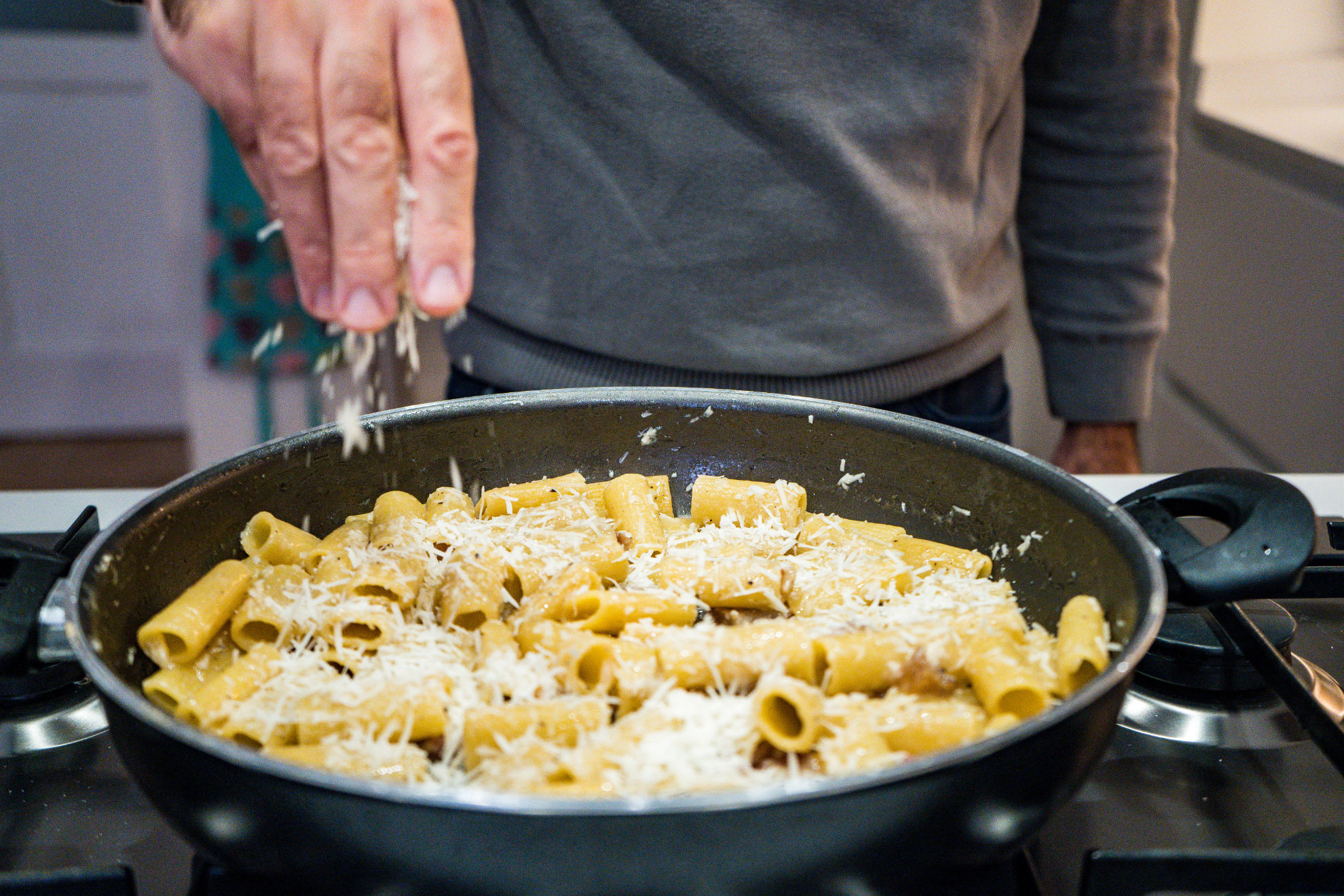«Comfort food is the food that restores soul and body - we read in online dictionaries - a dish that after a bad day has the power to make us feel protected, cuddled and satisfied».
Popular Lazio cuisine seems to fit perfectly this definition. If carbonara, “cacio e pepe” and amatriciana already have a role in the collective imagination, gricia enjoys less notoriety. Let's talk about the basics. Where it all started, at least as far as carbonara and amatriciana are concerned. Gricia, in fact, is a tasty dish made with bacon, pecorino cheese and ground pepper. Nothing more, nothing less.
Ph. Enrico Nocera

«Many consider gricia as the poor sister of the amatriciana - says Flavio De Maio, owner of the historic restaurant Flavio al Velavevodetto, in the popular Rome district of Testaccio -. However, reducing it to these terms would be really unfair to our gastronomic tradition. Gricia is a recipe where balance is important, perhaps more than in any other dish from the Lazio region. Precisely because there are no other ingredients, such as tomato and eggs, that can correct mistakes in its preparation».
Ph. Enrico Nocera

The secret, according to chef Flavio, is not to let the bacon dry out too much during the browning phase, so that it releases the fat without becoming dry. Then it's all a game of balances between the quantity of pecorino (never mix it with Parmesan or Grana!) and pepper. The cooking water of the pasta, rich in starch, then creates that emulsion with the fat from the bacon that generates the famous cream, typical of Gricia.
But why do we call it “gricia”? «The origin of the name – according to the Amici di Grisciano Association, which for years protected and handed down the original recipe - could date back to the 15th century, when in Rome Gricio was the word used to indicate the bakers all from the German regions of the Rhine and from the Canton of Grisons».
“Mo te consijo ‘na cosetta cicia ma bona, pepe e cacio solamente, che cor guanciale poi se chiama Gricia. E m’hai da crede, dentro a quattro mura magnà in mutanne… Senza un fiato… Gnente… Se gode più de’ la villeggiatura”
The term Gricio therefore indicated the duster that the bakers used as a uniform for work. «Over time – says the association - it also took on another derogatory meaning, equivalent to burino, to indicate a badly dressed man with vulgar behaviours». This is because apparently the bakers of the time were not actual models of elegance!
Ph. Enrico Nocera

Beyond the aesthetics, the shops of the “grici” were always open, from dawn until late at night, and often welcomed travelers, even pilgrims who came to the city of the Popes. The dish they used to prepare was the gricia: tasty, nutritious and above all cheap.
Another theory on the birth of the dish, equally accredited, is linked to transhumance, with the shepherds from nearby Abruzzi who ate cheese and bacon because it was an energetic and not very perishable snack, linked to the popular tradition of central Italy.

